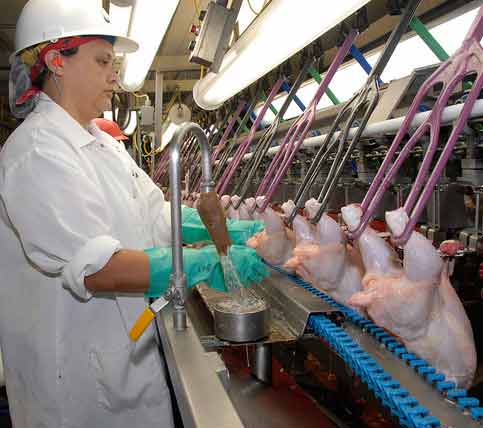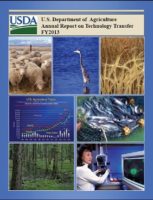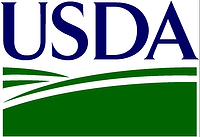Source: The Hill
Nearly 70 House members on Monday implored Agriculture Secretary Tom Vilsack to abandon plans to overhaul the nation’s poultry inspection system with a slate of new regulations.
The lawmakers argue that plans to remove some federal inspectors from turkey and chicken slaughterhouses while allowing the industry to speed up production lines would threaten the safety of employees and the nation’s food supply.
“While we strongly support modernizing our food safety system and making it more efficient, modernization should not occur at the expense of public health, worker safety, or animal welfare,” 68 House members said in a letter to Vilsack.
Reps. Rosa DeLauro (D-CT), Jim Moran (D-VA), Louise Slaughter (D-NY) and Bennie Thompson (D-MS) led the effort.
President Obama’s 2015 budget, unveiled earlier this month, contains millions of dollars worth of projected savings attributed directly to the regulations now under consideration at the Agriculture Department’s Food Safety and Inspection Service.
Vilsack touted the action during the department’s budget rollout. An estimated $7.5 billion of $9 billion in proposed cuts to the FSIS budget is attributed to the forthcoming rule
“So there's been an aggressive effort focused on this,” Vilsack told reporters. “The savings that's in this budget is a result of a proposal to modernize poultry inspection, which has not really changed much in the last 60 years. I think we know a lot more about where pathogens attach, what pathogens are most of concern, and how we might be able to improve the inspection process, while at the same time ... saving money.”
Under current rules, a federal inspector is required for every 35 birds that cross the slaughter line each minute. The total number of birds allowed to pass through is capped at 140 per minute, requiring four federal inspectors.
The draft regulations now in the pipeline would require just one federal inspector on the line, with other inspection responsibilities falling to plant employees. At the same time, speeds would be allowed to increase so that as many as 175 birds could pass by every minute.
The proposal, backed by industry groups including the National Chicken Council, is intended to move the focus of federal resources away from production lines in favor of more emphasis on off-line sampling for pathogenic microorganisms in poultry bound for commerce.
First proposed in 2012, the regulations are based on 15-year-old pilot programs at selected plants around the country. A 2013 Government Accountability Office (GAO) report concluded that that the USDA “has not thoroughly evaluated the performance of each of the pilot projects over time even though the agency stated it would do so when it announced the pilot projects.”
Critics say the proposed rule “appears poised to generate even more ambiguous data” because it would not impose standards for microbial testing, as part of the advertised shift toward a more scientific approach. In particular, there would be no system-wide testing for salmonella and campylobacter, the lawmakers argued.
“FSIS’s proposal thus hobbles what should be a fundamental goal of modernization — to create a system that tracks rates of contamination and facilitates continuous improvement in the poultry industry to decrease those rates throughout the system,” they wrote to Vilsack.




